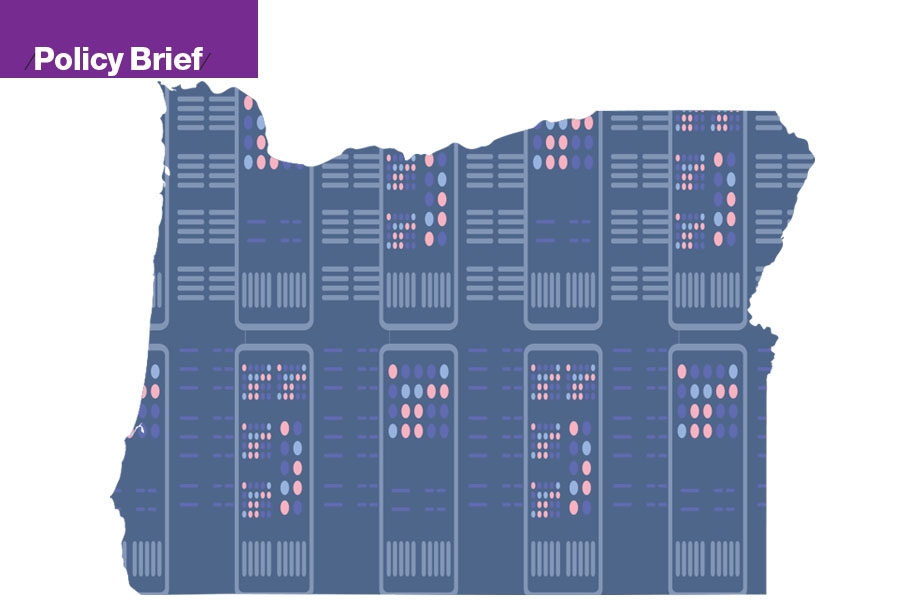A silver lining of the pandemic is that manufacturers are sourcing more materials and parts domestically.
Manufacturing accounts for 20% of Oregon’s gross domestic product (GDP), second nationally only behind Indiana. It is a crucial industry for Oregon’s economic engine, and one that provides high-paying, living-wage jobs that drive the health of communities around the state. Of Oregon’s 5,500 manufacturers, 87% have fewer than 50 employees.
COVID-19 created significant challenges for the manufacturing industry, causing supply-chain disruption and distribution delays that affected most businesses. Fortunately, Oregon manufacturers are diverse and span many different industries, from food and beverage to metals and wood products.
That diversity has helped Oregon manufacturing weather the pandemic, but with COVID-19 affecting us for the foreseeable future, there are ways that businesses big and small can strengthen their operations to stay competitive, as well as strengthen the U.S. manufacturing supply chain. Some suggestions include:
• Make sure you understand your financials from an operational decision-making perspective, and pay close attention to what you can control.
• Review your strategic plan to ensure it still makes sense. Focus on the essential elements of it and verify that your operating plan is aligned.
• Begin building the foundation for application of advanced manufacturing technologies in your operations (yes, this is possible for small and midsize companies, too). Education and road-mapping are great places to start.
• If you are in a position to invest, take this time to strengthen infrastructure with training systems and process improvements.
• Diversify your portfolio and expand into different markets to reduce overall risk.
While industry disruption is trying for business, one positive from the pandemic is that manufacturers are sourcing more materials and parts domestically, strengthening U.S. manufacturing and looking for innovative ways to stay competitive.
The Oregon Manufacturing Extension Partnership (OMEP) primarily works with small and midsize manufacturers to help them achieve their business goals. When economic slowdown happens, many people return to school to gain new skills.
The same can be said for manufacturing companies. Making internal business improvements now will position you for future success when the pandemic passes.
Another challenge manufacturers face is that as older workers retire, companies lose historical knowledge and skill sets. Using new technology such as augmented and virtual reality or robotics in your facility can attract younger workers.
Adopting new tech can also improve the hiring process. Testing candidates in a simulated environment can be fun for the potential hire, but also shows the individual’s aptitude for the work. This provides a safer way to hire with less risk to the company or potential employee.
This technology can also be used to capture “tribal knowledge” of the exiting workforce and assist in passing these skills and capabilities on to others.
One way Oregon manufacturers can potentially boost production and win new contracts right now is through the U.S. Department of Defense. Oregon is last in the country for military spending as a percentage of state GDP. There is potential for Oregon businesses working on military contracts to create a profitable manufacturing ecosystem.
The National Defense Authorization Act for FY2021 has money earmarked for the National Institute of Standards and Technology to be funneled through Manufacturing Extension Partnership centers to assist small and midsize companies to become compliant for Department of Defense work.
The Department of Defense encourages these companies to join its federal supply chain. OMEP’s newest consultant, Shane Steinke, helps those companies prepare for Department of Defense contracts through operational improvements, boosting cybersecurity standards and implementing advanced technologies. There are even educational-mentorship programs for smaller companies.
Businesses across the U.S. can also rely on Oregon manufacturers and other domestic markets for sourcing parts and materials for Department of Defense contracts, nationalizing the supply chain.
The federal government dictates that part of this work must be covered by small and midsize businesses. There are gaps, and Oregon companies should be seizing opportunities to fill them.
As with all business decisions, there is risk associated with any investment, but businesses that assess their portfolios and are open to diversification could find great opportunity in this work. This is a way for manufacturers to diversify their customer base and insulate themselves from the existing business cycle.
COVID-19 reset expectations about the way the world works. There will be more onshoring and domestic opportunities for manufacturers to strengthen the national supply chain. Right now, we are at a unique inflection point, which gives Oregon companies opportunities to be purposeful about business decisions.
Changes that were too difficult to implement in the past because of inertia should be revisited during this downtime.
Manufacturers that are disciplined and make conscious decisions about operations, adopting new technology and implementing a targeted strategy, set themselves up to be more prosperous in the future.
Aaron Fox is president of the Oregon Manufacturing Extension Partnership, a Portland-based nonprofit that helps small and medium-size Oregon manufacturers address challenges in the areas of manufacturing operations, business financials and strategy, and workforce solutions.
To subscribe to Oregon Business, click here.









